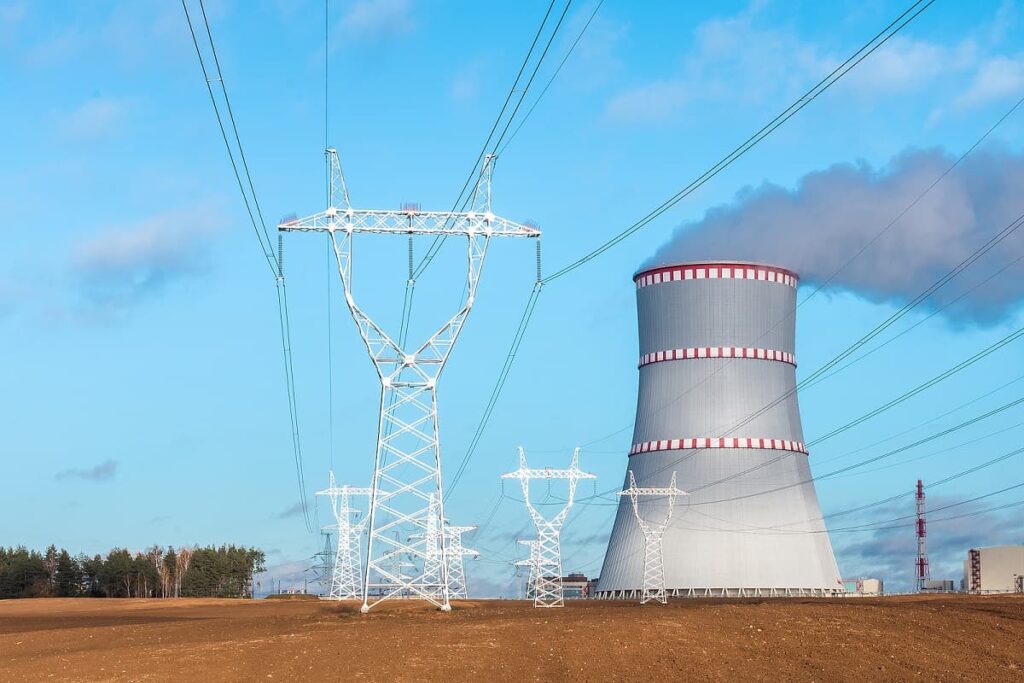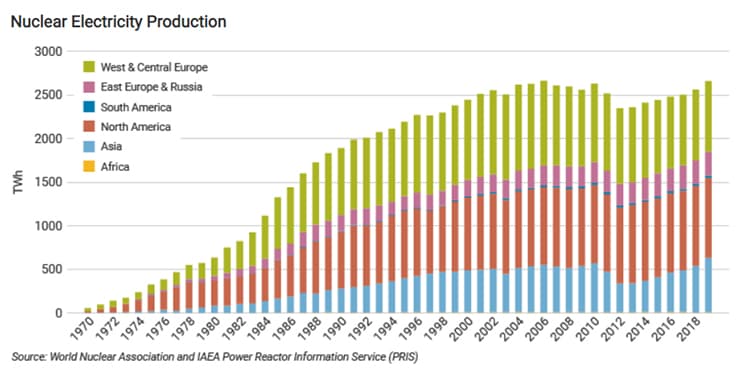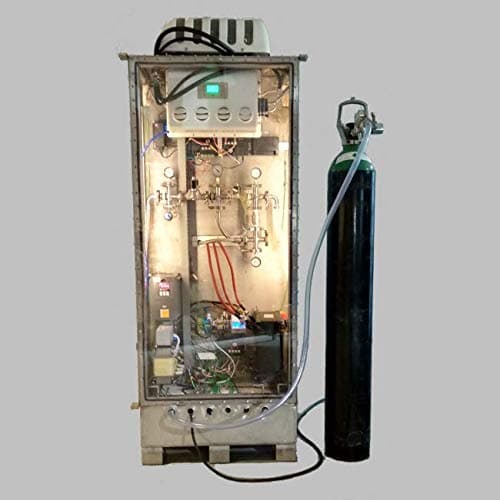Molten Salt Reactors Leading Advanced Nuclear Technology
Table of contents
Table of contents
- How We Learned to Stop Worrying and Love Nuclear Energy
- What are Molten Salt Reactors?
- Molten Salt Reactor Companies
- Bill Gates-Backed Nuclear Power Startup
- A More Efficient Molten Salt Reactor
- Recycling Spent Nuclear Fuel
- Whatever Floats Your Boat
- It’s All Greek to Us
- Going Nuclear with Thorium
- Going Big with Molten Salt Reactors
- Conclusion

Some emerging technologies are advancing so rapidly that we seem to write about them every week. Artificial intelligence is the most obvious example, as it bleeds into most other sectors, including robotics, smart cities, drug discovery, and the list goes on. Progress around other technologies is so painfully slow – and the eventual payoff debatable or so distant as to be nearly meaningless in a mortal lifetime – that we only occasionally revisit the topic to make sure we haven’t missed some great technological leap. A recent example is carbon capture, which remains economically infeasible but is attracting renewed interest from ESG types who want to mitigate some of the environmental impacts from fossil fuels. Another strategy, of course, is to switch to alternative forms of energy. One of these is the nuclear option – molten salt reactors, to be specific.

We’ve written quite a bit about advanced nuclear technology over the years. It’s an umbrella term for all of the different types of nuclear energy options under consideration to replace the current crop of power plants that use various kinds of fuels and coolants. The next-generation designs include not just molten salt reactors (MSRs), but also fusion reactors and small modular reactors (SMRs). It’s probably useful to understand a little bit about the history of nuclear power before we review the current state of molten salt reactors.
How We Learned to Stop Worrying and Love Nuclear Energy
Needless to say, we’re MBAs, not nuclear physicists, but briefly: Starting back in the 1940s, humans figured out that you could split the nucleus of an atom to create energy. Naturally, their first impulse was to turn this discovery into a weapon that could vaporize millions of people. You can only build so many nuclear missiles and nuclear-powered submarines, so they eventually developed commercial power plants to produce electricity.

At the heart of the system is the nuclear reactor, where all the magic and potential mayhem take place. There are a number of designs for fission nuclear reactors, which have been described as just exotic heat sources. In order to split heavy atoms like uranium or plutonium, you need to hit them with neutrons, which causes a chain reaction that releases large amounts of energy in the form of heat. The coolant – typically plain, old H20, known as a light water reactor (LWR) – heats up as it passes through the reactor core to power a turbine and generate electricity.

The big selling point is nuclear energy is zero carbon and incredibly dense compared to other fuel sources, as shown above. There are about 400 nuclear reactors in operation today, accounting for about 10% of the world’s electricity output and 29% of low-carbon sources, according to the Nuclear World Association. About 100 LWRs operate in the United States, producing about 20% of the country’s power. Great power, as the saying goes, comes with great responsibility – and nuclear waste. Throw in the potential for meltdowns of varying degrees of severity (see: Three Mile Island, Chernobyl, and Fukushima), as well as normal wear-and-tear leakage, and there’s a potentially steep environmental and economic cost.
What are Molten Salt Reactors?
The big selling point, then, for advanced nuclear technology is that the next-generation designs promise to be safer and cheaper, while reducing the amount of nuclear waste in the processing of fissile fuels. Enter molten salt reactors, which dissolve nuclear fuel in very hot fluoride or chloride salt, hence molten salt, rather than using solid forms common in most reactors. It acts like its own fuel and coolant.

Advocates of MSRs say these types of nuclear reactors are more efficient at burning uranium and especially thorium. They are potentially cheaper, in part, because the fuel assembly is simpler, as the reactors are essentially just vats of fuel. That’s also a potential design problem in terms of safety, though proponents will argue that the operational risks are more manageable for MSRs, especially when weighed against their additional safety benefits. Another downside is that molten salt reactors are also potential bomb factories, since the fuel has been partly processed, so you don’t want everyone in the nuclear neighborhood opening one for business.
Molten Salt Reactor Companies
The concept of MSRs has been around since the Manhattan Project. The Oak Ridge National Laboratory did decades of research, culminating in a working molten salt reactor in the late 1960s. Plans to expand beyond the pilot project were eventually abandoned. Today, there’s a pretty small field of companies and academic institutions attempting to finally commercialize molten salt reactors. We covered most of them about four years ago, which seems like enough time has passed to see who’s made breakthroughs or gone bust.
Bill Gates-Backed Nuclear Power Startup
The likely leader of the crowd is TerraPower, if only for the fact that billionaire Bill Gates is a co-founder and investor. Founded in 2008, the Seattle area company raised $35 million prior to last year when it received $80 million in matching funds from the U.S. Department of Energy to advance the startup’s Natrium reactor design. That brings total disclosed funding to $115 million. TerraPower stands to reap an additional $1.6 billion in matching grants over the next seven years during the life of the project, which should be enough to keep the lights on until the company can figure out a way to keep the lights on with its hybrid nuclear reactor. In partnership with GE Hitachi Nuclear Energy, TerraPower has developed a sodium fast reactor combined with a molten salt energy storage system. Sounds complicated but looks simple on paper:

The company is also working on other advanced nuclear technologies, including a molten chloride fast reactor and traveling wave reactor (TWR). The latter is actually considered the company’s flagship product and is ready for prototyping. One advantage of the TWR is that it can partly use fuel made from depleted uranium, a waste byproduct of enriching uranium, which cuts down on removal and disposal costs.
A More Efficient Molten Salt Reactor
Another top contender is Terrestrial Energy, a Canadian company founded in 2013 that has raised $46.6 million in funding, including about $5.4 million last year. The company has developed what it calls an integral molten salt reactor (IMSR) that operates at high temperatures and low pressure. Higher heat means better thermal efficiency for electric power generation – 47% versus 33% for conventional nuclear power plants. Low-pressure operation lowers engineering complexity. The company claims construction of its small, modular IMSR power plant can be completed in half the time of today’s commercial facilities at a tenth of the price – four years and $1 billion. And, most importantly, the system is cost-competitive with other energy sources:

The company is shooting to have a working IMSR power plant before the end of the decade.
Recycling Spent Nuclear Fuel
London-based Moltex is looking to the early 2030s to deploy the first commercial version of its small, modular molten salt reactor technology in Canada. Founded in 2014, the company has raised about $11 million but just announced $50.5 million in Canadian government funding this month, bringing total known investments to about $61.5 million. Moltex plans to build a 300MW stable salt reactor (SSR) facility along the country’s Atlantic coast in Saint John, New Brunswick. The company’s SSR technology involves generating heat through nuclear fission in tubes filled with molten salt fuel. It comes in three variations:

The beauty of the reactor in New Brunswick is that it is designed to consume spent fuel from a class of reactors originally designed in Canada, significantly reducing nuclear waste stockpiles.
Whatever Floats Your Boat
Small is big with advanced nuclear technologies, including for molten salt reactor designs, with the potential to deploy modular power plants on mobile platforms like barges. That’s the concept fueling interest in Seaborg Technologies, a Danish company that has raised about $25 million, including a $24 million venture round late last year. The idea dates back to the first nuclear-powered submarines. In this case, the plan is to build molten salt reactors in a shipyard and then tow the barges wherever they are needed. Seaborg is targeting its first deployment in Southeast Asia by 2025. The facilities are expected to last for at least 24 years.

Another company floating the idea of outfitting ships with molten salt reactors is ThorCon, which is doing a proof-of-concept in Indonesia. You can check out lots more details about the company’s reactor design here. In this case, ThorCon isn’t trying to reinvent the wheel, as the concept borrows directly from the Oak Ridge National Laboratory experimental MSR from 50 years ago.
It’s All Greek to Us
Somebody at Kairos Power is a fan of Greek mythology. Founded in 2016, the company is developing a test version of a molten salt reactor called Hermes in a project valued at $629 million, which the DOE is kicking in $303 million. The end-goal is the Kairos Power Fluoride Salt-Cooled High Temperature Reactor, which leverages TRI-structural ISOtropic (TRISO) particle fuel in pebble form combined with a low-pressure fluoride salt coolant. Yeah, it’s all Greek to us, but here’s a schematic:

The company is planning to invest $125 million in a new R&D facility toward the development of its advanced nuclear technology.
Going Nuclear with Thorium
Founded in 2011, Flibe Energy out of Huntsville, Alabama, has raised $4.2 million to advance its molten salt reactor design that leans on thorium as the primary fuel source. Thorium is especially attractive because of its high-heat tolerance, meaning less chance of a meltdown. The company’s lithium fluoride thorium reactor (LFTR) design aims for an efficiency of about 45%, claiming an individual’s lifetime energy consumption could be supplied, through an LFTR, by a piece of thorium the size of a golf ball. The element is also quite abundant, about three times more than uranium. Aside from energy, the company also claims it is developing oncology treatments, an application also being explored by TerraPower using slightly radioactive isotopes to kill cancer cells.
Another company that believes the future of molten salt reactors is in thorium is Copenhagen Atomics, a private Danish company that was founded in 2015. The startup has already released a commercial product, something called a molten salt loop for just $88,000 that you can order on Amazon (when it comes back in stock).

The loop enables MSR design R&D in such exciting areas as salt composition measurements, nozzle spraying for online removal of fission products, and heavy water moderated cores. It’s the perfect gift for the nuclear physicist in your life.
Going Big with Molten Salt Reactors

Founded in 2015, New Yawk-based Elysium Industries has reportedly raised $7 million to develop a molten salt fast reactor. The “fast” part refers to the fact that the design does not include a neutron moderator, which normally slows down the release of neutrons in the nuclear reaction. One advantage of this kind of reactor, according to an article in Forbes, is that it can use nuclear waste as fuel. While the company is angling to raise more money to build a small demo model, it believes big is better for molten salt reactors (more than 1 gigawatt) if the goal is to cut back on carbon emission.
Conclusion
While no list of molten salt reactor companies is going to be complete, these are most if not all of the major players. One name is missing, however. That’s because Transatomic Power, which had the backing of billionaire Peter Thiel, reportedly shut down operations in 2018. The company website is still active, and it is making its intellectual property open source to keep the dream of advanced nuclear technology going. Frankly, we’re surprised more companies haven’t folded, because aside from the odd billionaire like Gates or Thiel, investors aren’t exactly lining up to put money into a technology that historically has a somewhat negative perception. Americans remain pretty evenly divided (surprise) about the use of nuclear energy, according to a Gallup poll in 2019, published 40 years after the Three Mile Island accident.

Like carbon capture, the nuclear industry will need to rely largely on government subsidies to prove that it can be safer, cheaper, more efficient, and produce less toxic waste. We’ll want to check back in a few more years to see which of these companies actually deploy pilot molten salt reactors and what the data say about those particular metrics.
Retail investors will definitely remain on the sidelines, except for maybe a pick-and-shovel play on nuclear energy with a manufacturer of large reactor components in North America or a few Chinese utilities that offer exposure to the more general nuclear energy theme. In fact, China and the rest of Asia are places to keep an eye on as a more ready market for nuclear energy. There’s also a Reston, Virginia company called Lightbridge (LTBR), which trades on the Nasdaq, that is developing “next-generation nuclear fuel technology.” At a market cap of $45 million and no discernible revenues, it would probably be radioactive to your bank account, despite gaining more than +260% over the last year.
Sign up to our newsletter to get more of our great research delivered straight to your inbox!
Nanalyze Weekly includes useful insights written by our team of underpaid MBAs, research on new disruptive technology stocks flying under the radar, and summaries of our recent research. Always 100% free.























The clear winner should be the offering by Elysium. It is head and shoulders above the rest in terms of benefits. It promises to consume nuclear waste as fuel, it’s proliferation resistant, and unlike fusion, achievable in the near term. It’s a shame that it doesn’t get as much play as less attractive solutions.
Thank you for the comment!
I understand that Thorium molten salt reactors do NOT produce material for a nuclear bomb. Could that be one of the reasons (even the main reason?) why this type of reactor was abandoned in the late 1960s? Sounds very possible…
Molten salt reactors have a long and dismal economic as well as operational history. There is also no economic advantages to recycling the nuclear fuel and the amount of radioactive waste created is as bad or worse than the current reactor types. Advanced gas reactors are safer, but economics may also be problematic, although there are several innovations that may overcome competitiveness issues. See hybridpwr.com
The article states: “There are about 400 nuclear reactors in operation today, accounting for about 10% of the world’s energy output and 29% of low-carbon sources, according to the Nuclear World Association.” This is not true. It’s 10% of the world’s electricity, but only about 4% of the world’s energy.
Then there’s this bit: “…and deadly radiation in the form of nuclear waste. Throw in the potential for catastrophic meltdowns (see: Three Mile Island, Chernobyl, and Fukushima)…” Really, you had to throw in “deadly” there? Look at pictures of spent fuel casks with people leaning casually against them and maybe rethink your scary wording. Spent fuel is easy to take care of safely. As for the similarly fear-mongering wording of “catastrophic meltdowns”, the only one of those three examples where anybody died from exposure to radiation was Chernobyl. Three Mile Island wasn’t even catastrophic to the power company’s shareholders, much less to anyone else. And in Japan the utility company is still functioning, though hampered by overly fearful politics from getting the rest of their nuclear plants up and running.
Try to keep the scare words out of tech articles, okay? It’s lazy and counterproductive to fact-based reporting, which I would hope you aspire to.
Thank you very much for taking the time to comment Jack. You’re doing us a favor by correcting mistakes and we appreciate it.
Your first point is absolutely correct on “10% of world’s electricity.” Fixed.
Regarding the use of the word “deadly,” you’re correct. There isn’t value added by the use of that word. Removed.
Regarding use of the word catastrophic, this is arguable. Chernobyl was by any account a catastrophe. The other two could probably be argued either way, depending on which stakeholder is making the argument. Still, there is a spectrum here, so we replaced with word with “varying degrees of severity.”
As editors, we’re aware these discussions can be charged. We also like to be provocative when we write (regular readers know this well), so it’s a fine balance. Again, we appreciate you taking the time to comment here.
Thanks for the corrections, Jack… Indeed you are correct.
I would call the Moltex Stable Salt Reactor offering the most promising because it will generate electricity without subsidy cheaper than all fossil powered, including CCGT gas power. Their rationale is clearly explained here by Moltex chief scientist Dr Ian Scott in a 33 minute video on YouTube.
I’d suggest that is why Moltex is now receiving serious funding.
I think TerraPower would be worth buying, but I don’t see how to do it. Are they part of any portfolio of a listed company ?
Not that we’re aware of Stan.
Dismal ??? Only two were operated. Experimental ones. The last one was built with a pittance in money and operated beautifully.
MSRs are able to consume the same nuclear fuel for much, much longer (5x as long without especial effort, with reprocessing they can consume all the fuel with a slow cycle of adding more fissile and fertile and removing fission products).
I agree with you completely I think that Elysium’s design is clearly superior to the alternatives. It should be much cheaper to both run and to construct. One overlooked advantage of fast neutron reactors is they don’t require moderators. Typically graphite is used for this and it requires replacement every 4 years or so. This graphite is radioactive when it is removed from the reactor. So it becomes nuclear waste. It also requires reactor shutdown. This adds greatly to the expense of running a reactor, and Ed Pheil has cleverly avoided these costs.
Thank you for the comment James. If there is some investment opportunity you want to tell our readers about (we edited your comment) then please send it to us and we’ll vet it first. Thank you!
How can you say that they have a dismal operating history? What history? Yeah, the economic prospects for operating gas reactors is dismal because triso fuel is so terribly expensive. Of course there are economic advantages to recycling nuclear fuel provided your reprocessing is not expensive. Making MOX fuel is expensive, but there other reprocessing methods, and some of the proposed reactors use these methods. Some programs claim they can make money using this fuel. The fee they get paid for disposing of this fuel would more than pay for the reprocessing.
Good point. Thank you for the insightful comment James!